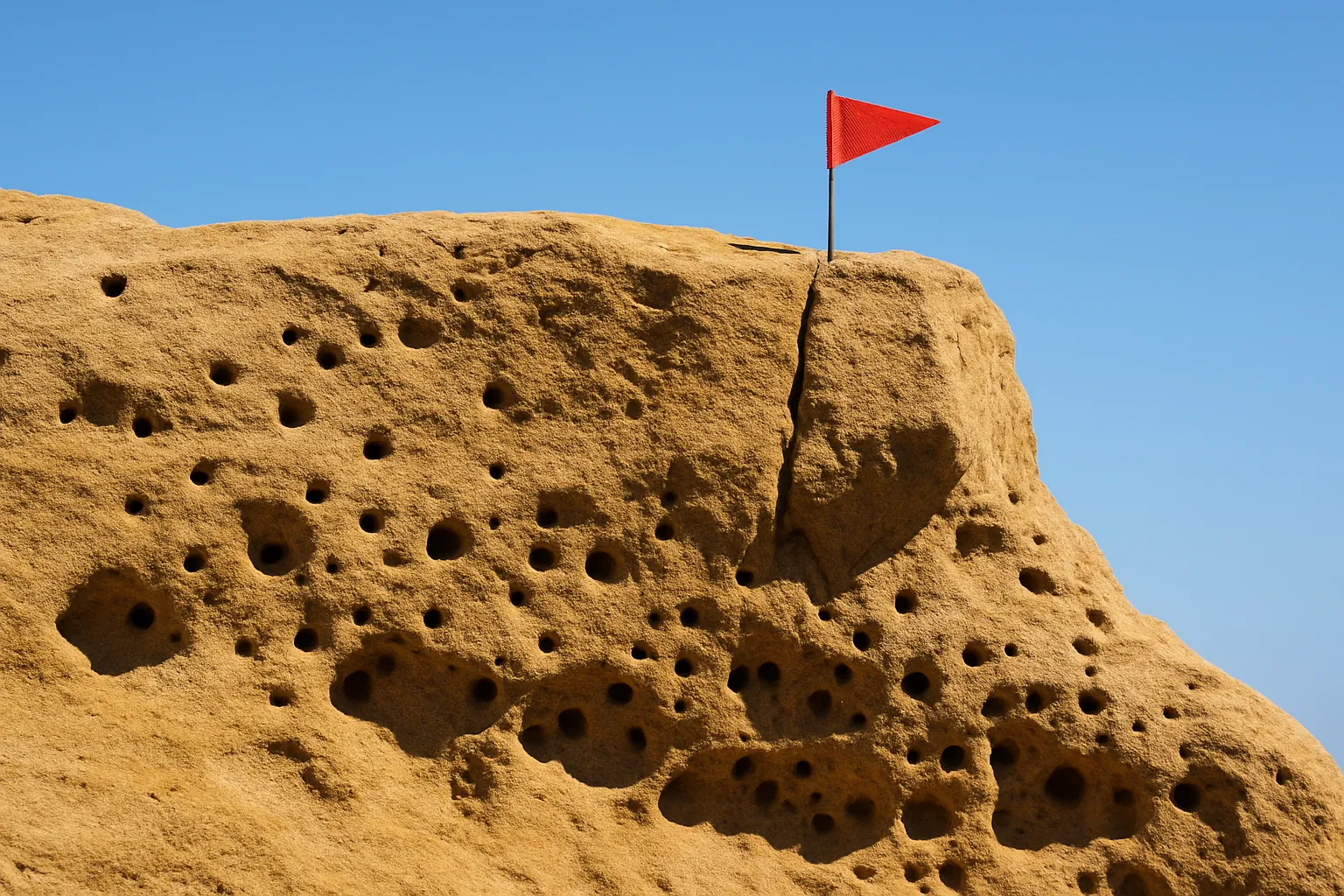Emergency sirens may as well be blaring across Palisades Park tonight. What began as a cute post-pandemic critter boom has erupted into what city officials call the most serious single-species crisis since the 1934 gopher scare. Visitors who once paused to snap selfies with bushy-tailed charmers now weave through dense squirrel traffic while scanning the bluffs for fresh collapse lines. The City of Santa Monica, suddenly cast as ecological first responder, is racing to confront a rodent regime that has multiplied by an estimated 312 % in just two years. To hear park Superintendent Elena Ruiz tell it, “we are no longer spectators to a wildlife trend—we are custodians at the edge of a cliff.”
The Burrow Blitz: How a Picnic Habit Became a Geological Time Bomb
Experts trace the ground-zero moment back to March 2020, when lockdowns emptied the park but left behind once-a-day bread-crumb suppers. Deprived of crowds, the squirrels discovered unguarded picnic debris and reproduced without interruption. Dr. Maceo Leung, an urban wildlife ecologist at UCLA, describes a domino effect: “Every extra calorie converts directly into another burrow mouth.” Those burrows are now riddling the coastal bluff like Swiss cheese. A 2024 soil survey commissioned by the city found tunnel density tripling in the park’s south quadrant, undermining footpaths that carry 1.2 million tourists annually.
“This isn’t just about cute animals—it’s sedimentary sabotage,”
Leung warns.
The threat is not hypothetical. On April 22, a ten-foot chunk of cliff face sheared off overnight, scattering sandstone onto the bike path below. City engineers, citing the incident, closed 200 yards of Ocean Avenue sidewalk for reinforcement. The public health angle is equally sobering. Flea colonies associated with the squirrels can transmit plague, a specter that last haunted Los Angeles in 1924. According to a Los Angeles Times archival review, Santa Monica was cited for squirrel-borne health violations as far back as 2005. Today’s numbers dwarf those precedents, prompting the Department of Public Health to deploy monitoring traps throughout May.
Public Health Cascades and the Flea Factor 
While erosion captures headlines, the silent microbial menace worries epidemiologists. Dr. Clarisse Boudreaux of UCLA Medical Center notes that flea counts collected in April exceeded county safety thresholds by 28 %. “One bite under the wrong circumstances,” she stresses, “and we’re writing a very different story.” City crews now sweep picnic tables daily, spraying environmentally safe insecticide in an effort to break the parasite chain. Still, visitors feed the squirrels by the handful. A single social media post of a furry friend nibbling a peanut racks up thousands of likes, undermining months of outreach.
The Friends of Palisades Park nonprofit placed 40 new signs imploring guests to refrain, yet compliance hovers near 37 %. “We feel like we’re taping over a tidal wave,” sighs volunteer coordinator Martin Cruz. The group’s website documents erosion footage that looks alarmingly like sped-up glacier melt.
“If it were water doing this damage, we’d already have FEMA,”
Cruz argues. The city is contemplating escalated tactics, from fines for hand-feeding to roping off high-traffic lawns.
Meanwhile, the park’s grassy plateaus are transforming into open-air soil labs. Burrows interconnect beneath the surface, funneling rainwater straight into weak points of the cliff. FEMA, CalTrans, and the California Coastal Commission have each dispatched observers. “We must decide whether Palisades Park remains a public amenity or becomes a full-time construction zone,” says Deputy City Manager Rosa Esquivel. The bureaucratic stakes have rarely felt heavier for a nine-block park.
Containment Playbook: Vaccines, Raptors, and the Battle for the Bluff
Santa Monica’s response plan is nothing short of municipal triage. The most talked-about tool is an immunocontraceptive vaccine that sterilizes female squirrels for up to three years. City Council will vote on a $1.7 million pilot next month, following the model used in Fairfax County, Virginia. Critics argue that the timeline is too slow for a cliff eroding by the week. “You can’t vaccinate rock,” quips geotechnical engineer Dr. Olivia Prentice, advising the Coastal Commission.
Parallel proposals include boosting raptor populations—installing nesting platforms to attract red-tailed hawks—and resurfacing picnic areas with deterrent textures that discourage burrowing. A joint study by CalTrans and the city suggests that strategic planting of native ice plant could reinforce topsoil within two seasons. Yet all roads lead back to human behavior.
“Every almond tossed over the rail undoes a fiscal year of planning,”
laments Ruiz.
Funding is equally precarious. A proposed half-cent sales-tax bump earmarked for bluff stabilization faces opposition from downtown merchants already nursing pandemic wounds. Nevertheless, momentum builds. At last week’s town-hall livestream, more than 600 viewers logged on in the first five minutes, a record for any infrastructure topic since 2019’s pier-piling debate. Residents sense a tipping point: act now, or concede Palisades Park to the squirrels—and gravity.
Next Steps: Civic Resolve on a Cliff Edge
Tomorrow’s council session will decide whether to authorize emergency funds, kicking off a summer of crack-filling, vaccine trials, and nightly raptor releases. Officials frame the vote as existential. “The bluff doesn’t negotiate,” Mayor Ian Costello told reporters Monday. The subtext is unmistakable: lose the bluff, and a signature slice of Santa Monica’s identity crumbles into the Pacific.
Yet optimism lingers. Local startup EcoSonic has offered ultrasonic burrow disruptors at cost, while the Santa Monica Pier Corporation pledged to host a ‘Predator Appreciation Day’ to educate tourists on hawk stewardship. Even national outlets have taken note—turning a once-quiet green space into a referendum on coastal resilience. Whether the city can marshal science, policy, and public will in time remains the open question.
For now, officials ask visitors to pocket the peanuts, stick to marked paths, and remember that the battle for Palisades Park is a battle for every patch of coastline edging perilously close to today’s rising tide and tomorrow’s crumbling ledge.


